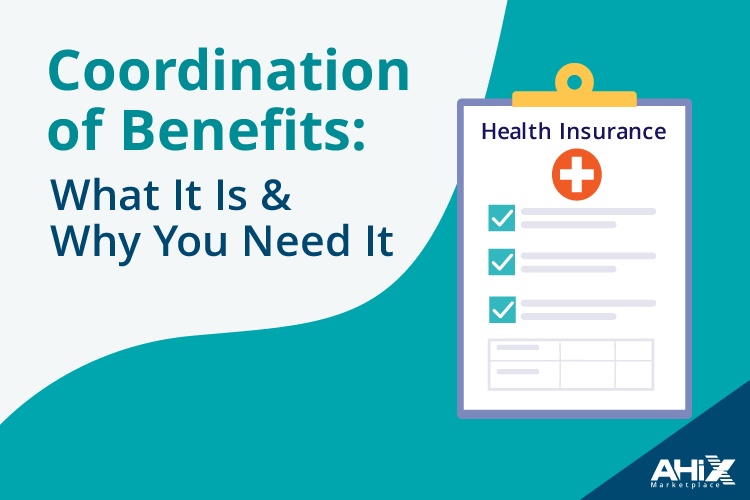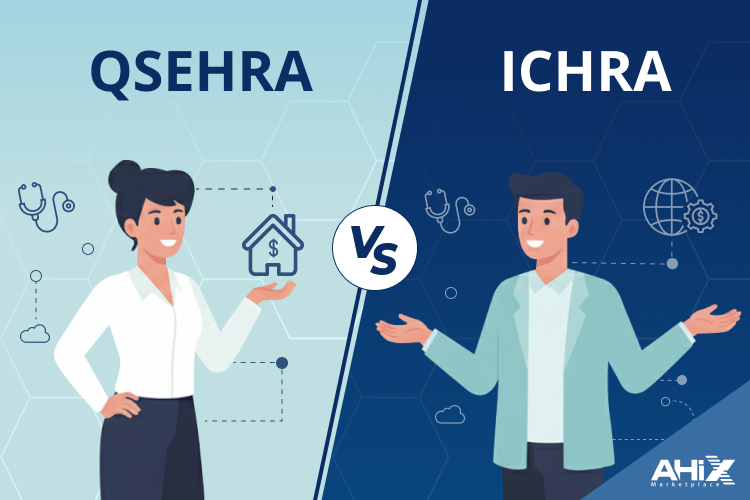Navigating the world of health insurance can be overwhelming, especially when you’re covered by more than one plan. Whether you have insurance through your employer and a spouse’s plan, or you’re managing both Medicare and a private policy, understanding how these plans work together is crucial. This is where Coordination of Benefits (COB) comes into play a process that determines which insurance pays first and how much each will cover.
Coordination of Benefits ensures there’s no duplication in claim payments when multiple health insurance plans are involved. It protects both the policyholder and the insurance providers by streamlining the billing process and avoiding overpayments. This is particularly important in cases of dual insurance coverage, where having clarity on primary and secondary insurance responsibilities can save time, money, and stress.
What Is the Coordination of Benefits?
Coordination of Benefits (COB) is a system used in health insurance to manage the payment of claims when a person is covered by multiple health insurance plans. The goal is to ensure that policyholders receive the benefits they’re entitled to without duplication of payment, while helping insurers divide responsibility fairly. In other words, COB decides which plan pays first (primary insurance) and which plan covers any remaining eligible costs (secondary insurance).
This process is especially important in situations like spousal coverage, dependent children with coverage under both parents, or individuals who have both employer-sponsored insurance and Medicare. Without proper COB insurance protocols, claims can be delayed, denied, or paid incorrectly.
Insurance billing coordination through COB helps streamline payments between insurers and providers. It allows you to take full advantage of your coverage, while ensuring that no single insurer pays more than its share. Understanding how COB works can reduce confusion and help you avoid unexpected medical bills.
Common Situations Where Coordination of Benefits Is Needed

You may need Coordination of Benefits (COB) if you’re covered by more than one health insurance plan. COB helps insurance companies decide who pays first and prevents confusion or overpayment.
Here are the most common situations where COB insurance applies:
- Married and Both Spouses Have Health Insurance
If you and your spouse each have health insurance through work, and both of you are listed on each other’s plans, COB is used to determine whose plan is primary. - Children Covered by Both Parents
If both parents have insurance and the child is listed as a dependent on both plans, the birthday rule usually applies. The plan of the parent whose birthday comes first in the year becomes the primary insurance. - Medicare and Employer Insurance
If you’re 65 or older and still working, you might have both Medicare and a work plan. COB decides whether Medicare or your employer’s plan pays first, depending on the size of the company. - Coverage from Two Jobs
If you work two jobs and both offer health insurance, COB helps determine which employer plan is primary and which is secondary. - Divorced or Separated Parents
If a child is covered under both parents’ health plans, COB will consider legal custody or court orders to decide which plan is primary. - Retired and Still Covered by a Former Employer
Some retirees have Medicare plus a retiree health plan. In most cases, Medicare is primary, but COB confirms how these benefits are coordinated. - Private Plan Plus Group Coverage
If you’ve bought your own insurance and also have coverage through a group plan (like a union or association), the group plan is usually primary.
In all these situations, getting COB right ensures smooth claim processing, accurate billing, and fewer out-of-pocket costs.
What Does Primary vs. Secondary Insurance Mean?

When you’re covered by more than one health insurance plan, each policy doesn’t just split the bill 50/50. Instead, one plan pays first—this is known as your primary insurance and the other covers some or all of the remaining costs. That second plan is called your secondary insurance.
Understanding the difference between primary and secondary insurance is essential when managing coordination of benefits (COB). Your primary insurer handles the claim first and pays according to the terms of your plan. After that, your secondary insurer reviews what’s left and decides how much more they will cover, if anything.
So how do insurance companies decide which plan is primary? It depends on the situation:
- If you’re covered by your own employer and also listed on your spouse’s plan, your employer’s plan is usually primary.
- For dependent children, the Birthday Rule often applies—the parent whose birthday comes first in the calendar year typically has the primary plan.
- If you have Medicare and an employer-sponsored plan, the employer plan may be primary depending on the company size.
Knowing who pays first avoids claim delays and ensures you get the most from both plans. If you’re unsure, contact your insurance providers.
How to Set Up and Manage Coordination of Benefits Effectively
Many people search for help with how to manage multiple health insurance plans or how to set up Coordination of Benefits (COB). If you have dual insurance coverage, knowing how to handle COB the right way can prevent claim delays, billing errors, and unexpected out-of-pocket costs.
Here’s a step-by-step guide to help you manage COB with confidence:
1. Gather All Active Insurance Information
List every health insurance policy you’re enrolled in—this includes employer coverage, a spouse’s plan, a parent’s policy, Medicare, or private insurance.
2. Notify Each Insurance Company
Contact every insurer and inform them that you have more than one active plan. Accurate COB setup starts with clear, up-to-date information.
3. Determine Which Plan Is Primary
Use standard COB rules:
- Your employer’s plan is usually primary.
- For children, the birthday rule often applies.
- Medicare may be primary or secondary, depending on your employment status.
4. File Claims with the Primary Insurance First
Always send your medical bills to the primary insurance provider. Once the claim is processed, you’ll receive an Explanation of Benefits (EOB).
5. Submit the EOB to Your Secondary Insurance
Share the EOB with your secondary insurance to request payment for any remaining covered costs like copays or deductibles.
6. Review and Update Your COB Status Annually
Life changes like marriage, divorce, job changes, or turning 65 can affect COB. Always update your insurance providers during open enrollment or when your situation changes.
Coordination of Benefits Rules:

When you’re covered by more than one health insurance plan, insurance companies follow a specific set of Coordination of Benefits rules to decide which plan pays first. These rules are in place to prevent duplicate payments and ensure fair handling of claims across both primary and secondary insurance providers.
Here are the key rules that determine the order of payment:
- Policyholder Rule
The plan that covers the person as an employee or primary member pays first. If you’re covered by your own job and also as a dependent on a spouse’s plan, your employer’s plan is the primary insurance. - Birthday Rule (for Dependent Children)
When a child is covered by both parents, the plan of the parent whose birthday comes first in the calendar year is the primary. If both parents share the same birthday, the plan that has been in effect longer becomes primary. - Medicare and Employer Coverage
If you’re over 65 and still working for an employer with 20 or more employees, your employer plan pays first and Medicare is secondary. If the employer has fewer than 20 employees, Medicare is primary. - Divorce or Separation
If a child is covered by both parents but they are divorced or separated, the plan of the parent with legal custody usually pays first—unless otherwise specified by court orders or legal agreements.
Understanding these COB rules ensures that your dual coverage works correctly and your claims are processed without delay.
Common Coordination of Benefits Mistakes to Avoid:
- Not informing insurers of dual coverage
Failing to report multiple health plans can result in claim delays or denials. - Ignoring COB form requests
If your insurance company asks for a COB form and you don’t submit it, they may stop paying claims. - Assuming your doctor handles everything
While providers submit claims, you are responsible for updating your insurance information. - Submitting claims to the wrong primary insurer
If the wrong plan is billed first, the process can be delayed and lead to unexpected out-of-pocket costs. - Not reviewing your COB status regularly
Changes in your job, marital status, or Medicare enrollment should always be reported to your insurers.
Conclusion:
Coordination of Benefits plays a critical role when you have more than one health insurance plan. To avoid delays or denied claims, it’s important to ensure your insurance providers have accurate, up-to-date information about all active policies. This includes notifying them of any changes in employment, coverage, or Medicare enrollment.
Understanding which plan is primary and which is secondary helps avoid billing confusion. If claims are submitted to the wrong insurer, the process can take longer and leave you with unexpected charges. Reviewing your Explanation of Benefits (EOB) statements can help confirm that claims are being processed correctly. At AHiX, we help you navigate these situations by making sure your plans are coordinated properly, so you can avoid delays and get the coverage you deserve.
FAQs:
1. Can I have two health insurance plans at the same time?
Yes, it’s possible to have dual coverage. This often happens when you’re insured through your job and also listed on a spouse’s or parent’s plan. Coordination of Benefits (COB) rules decide which plan pays first.
2. How do I know which plan is primary?
Your primary insurance is usually the one where you’re listed as the main policyholder, like through your employer. If you’re covered as a dependent, rules like the birthday rule or legal custody may apply.
3. Will both plans pay the full cost of my medical bills?
No. The primary insurance pays first. Then, your secondary plan may cover part or all of the remaining costs, depending on how benefits are coordinated.
4. What happens if I don’t update my COB information?
If insurance companies don’t know you have another plan, your claims may be delayed or denied. Always update your COB details, especially after life changes or during open enrollment.
5. Does Coordination of Benefits apply to dental and vision insurance too?
Yes, COB rules can apply to both dental and vision coverage. If you’re covered by more than one provider, the same rules are used to decide which plan pays first.
6. What happens if I don’t complete the COB form?
Your insurance company may stop paying claims until they receive your updated COB information. Always complete the form when requested to avoid claim delays.
7. Can COB affect how much I pay out of pocket?
Yes. If COB is not set up properly, the wrong insurer may be billed first, which can lead to unexpected out-of-pocket costs. Correct coordination can help reduce your expenses.
8. What happens if I lose one of my insurance plans?
Notify your remaining insurer right away. They need to update your COB status to treat their plan as your primary coverage moving forward.
9. How do I find out if my COB is set up correctly?
Contact both insurance companies to confirm your COB status. You can also check your Explanation of Benefits (EOB) statements to see which plan is paying first.
10. Is a Coordination of Benefits form required for every claim?
No. You usually only need to submit the COB form once per year or when your coverage changes. Your insurer will let you know if an update is needed.



